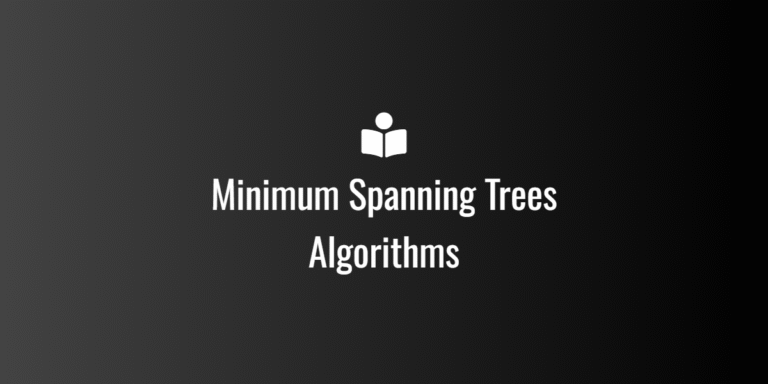In data communication, transmission refers to the method in which data is sent from one device to another over a communication channel. The two primary types of transmission are synchronous transmission and asynchronous transmission. These two methods differ in how data is organized, transmitted, and synchronized between the sender and receiver.
1. Synchronous Transmission
Definition:
Synchronous transmission is a type of data transmission where data is sent in a continuous stream, and the sender and receiver devices are synchronized with each other using a shared clock signal.
How It Works:
- In synchronous transmission, both the transmitter and receiver are synchronized to the same clock signal, meaning they know exactly when to start and stop transmitting data.
- Data is transmitted in fixed-size blocks or frames, often called “data frames” or “packets.” Each frame contains the data and some additional information, such as start and stop indicators, as well as error-checking data.
- The clock is used to regulate the timing of each bit in the data stream. This ensures that the receiver can read the incoming bits at the correct times.
- Synchronization between sender and receiver is maintained, so there’s no need for additional timing information in the data stream itself.
Features of Synchronous Transmission:
- Continuous Data Flow: Data is transmitted continuously, without gaps or breaks, once the transmission starts.
- Data Frames: Data is sent in frames that include both the data and control information (such as headers and footers).
- High-Speed Communication: Since it doesn’t require start and stop bits for each byte, synchronous transmission is generally faster and more efficient than asynchronous transmission.
- Requires Synchronization: Both the sender and receiver need to be synchronized, and this is achieved using an external clock signal or by using protocols that help establish synchronization.
Advantages:
- Efficiency: There is no overhead for start/stop bits, making synchronous transmission more efficient for large data transfers.
- Speed: It can transfer data at higher speeds compared to asynchronous transmission because it doesn’t waste time for start and stop bits.
- Error Detection: Since data is sent in blocks with error-checking information, errors can be detected and handled more efficiently.
Disadvantages:
- Complexity: The need for synchronization between the sender and receiver can add complexity to the system.
- Timing Issues: If synchronization is lost (due to network issues or clock drift), data may be corrupted or lost.
- Requires more Buffering: The receiver must be able to buffer and process data in blocks, which could require more memory.
Examples of Synchronous Transmission Protocols:
- HDLC (High-Level Data Link Control)
- SDLC (Synchronous Data Link Control)
- SONET (Synchronous Optical Network)
2. Asynchronous Transmission
Definition:
Asynchronous transmission is a type of data transmission where data is sent one byte or character at a time, with each byte being framed by start and stop bits to indicate the beginning and end of transmission.
How It Works:
- In asynchronous transmission, there is no need for a shared clock signal between the sender and receiver. Instead, each byte or character is sent independently, with a start bit signaling the beginning of transmission and a stop bit indicating the end.
- The data is sent in small chunks, typically 8 bits (1 byte), with additional bits (start, stop, and parity bits) to frame the data. The start bit is used to signal that a byte is beginning, and the stop bit marks the end of the byte. The stop bit also provides a small time gap before the next byte is transmitted.
- Since there is no synchronization of data flow, the timing between each character transmission may vary.
Features of Asynchronous Transmission:
- Byte-by-Byte Transmission: Data is transmitted one byte or character at a time, with each byte surrounded by start and stop bits.
- No Synchronization Needed: The sender and receiver don’t need to be synchronized to a shared clock. Each byte is transmitted independently.
- Start and Stop Bits: Every byte sent is framed with a start bit (typically “0”) and stop bits (typically “1”). The start bit signals the beginning of data transmission, and the stop bits signal the end.
- Low-Speed Communication: Asynchronous transmission is generally slower than synchronous transmission because of the overhead of start and stop bits for each byte.
Advantages:
- Simplicity: Asynchronous transmission is easier to implement since it doesn’t require synchronization between the sender and receiver.
- Flexibility: It’s suitable for systems where data is transmitted irregularly, and there’s no continuous data stream. This is ideal for systems with intermittent data transmissions (e.g., keyboard input or serial communication).
- Low Overhead: For low-data-rate transmissions, asynchronous transmission can be sufficient and cost-effective.
Disadvantages:
- Lower Efficiency: Each byte requires additional start and stop bits, leading to inefficiency in terms of bandwidth utilization.
- Slower Data Transfer: Due to the overhead of start and stop bits, asynchronous transmission is generally slower than synchronous transmission.
- Limited Error Detection: Error detection is usually limited to the parity bit, which isn’t as robust as the error-detection mechanisms used in synchronous transmission.
Examples of Asynchronous Transmission Protocols:
- RS-232 (Recommended Standard 232): A standard used for serial communication between computers and peripherals.
- UART (Universal Asynchronous Receiver/Transmitter): A hardware device used for asynchronous communication.
- Modems: Asynchronous communication is often used in modem communication for transferring small chunks of data over telephone lines.
Comparison Between Synchronous and Asynchronous Transmission
| Feature | Synchronous Transmission | Asynchronous Transmission |
|---|---|---|
| Data Transfer Method | Continuous stream of data in frames or blocks | Data sent byte by byte, each byte framed with start and stop bits |
| Clock Synchronization | Requires synchronization of sender and receiver clocks | No need for synchronization between sender and receiver |
| Speed | Faster and more efficient for large data transfers | Slower due to start and stop bit overhead |
| Efficiency | Higher efficiency as no extra bits are used for each byte | Lower efficiency due to the overhead of start/stop bits |
| Complexity | More complex due to the need for synchronization | Simpler, easy to implement without the need for synchronization |
| Error Detection | Includes error-checking mechanisms within data frames | Limited error detection (often just parity bit) |
| Use Case | Used for high-speed data transfer (e.g., internet connections, video conferencing) | Used for low-speed, intermittent data transfer (e.g., serial communication, keyboards) |
Conclusion
- Synchronous Transmission is more efficient for high-speed communication because it avoids overhead, but it requires synchronization and is generally more complex to implement. It is best suited for continuous data streams.
- Asynchronous Transmission, while simpler to implement and more flexible for occasional data transfer, is less efficient due to the overhead of start and stop bits. It’s more suitable for devices that send data intermittently.
Both types of transmission have their advantages and are used in different scenarios based on the needs of the communication system.


